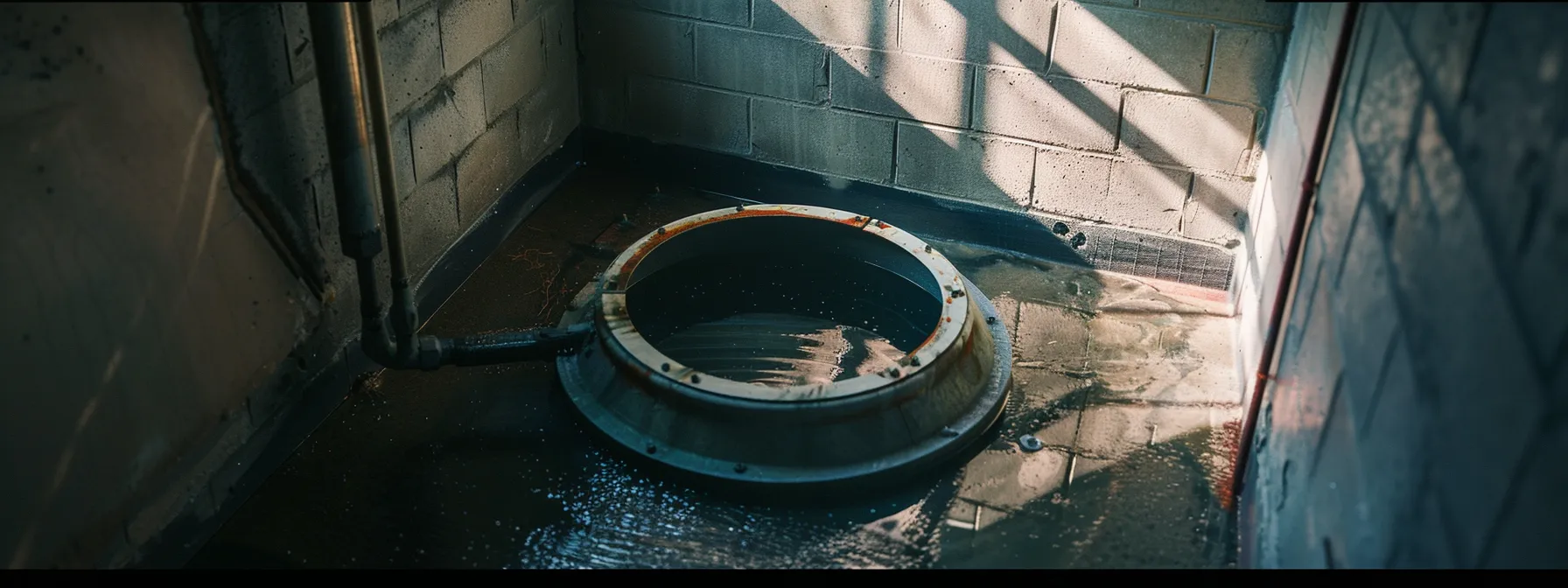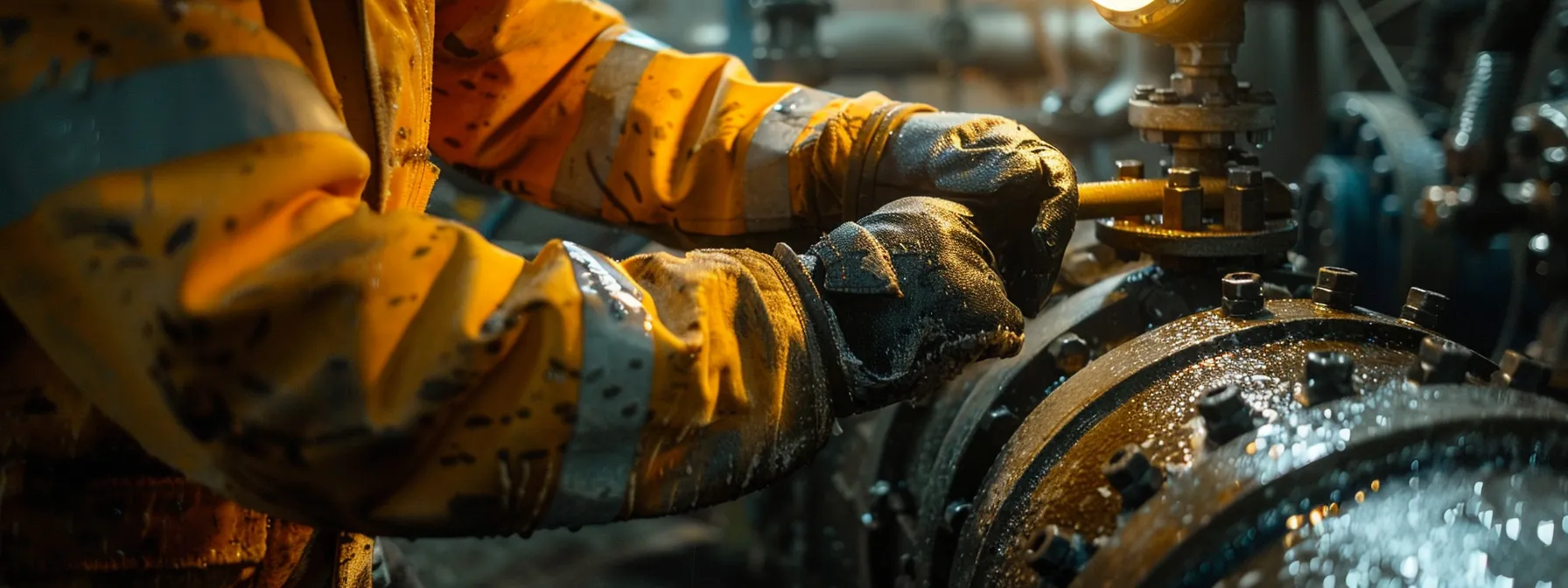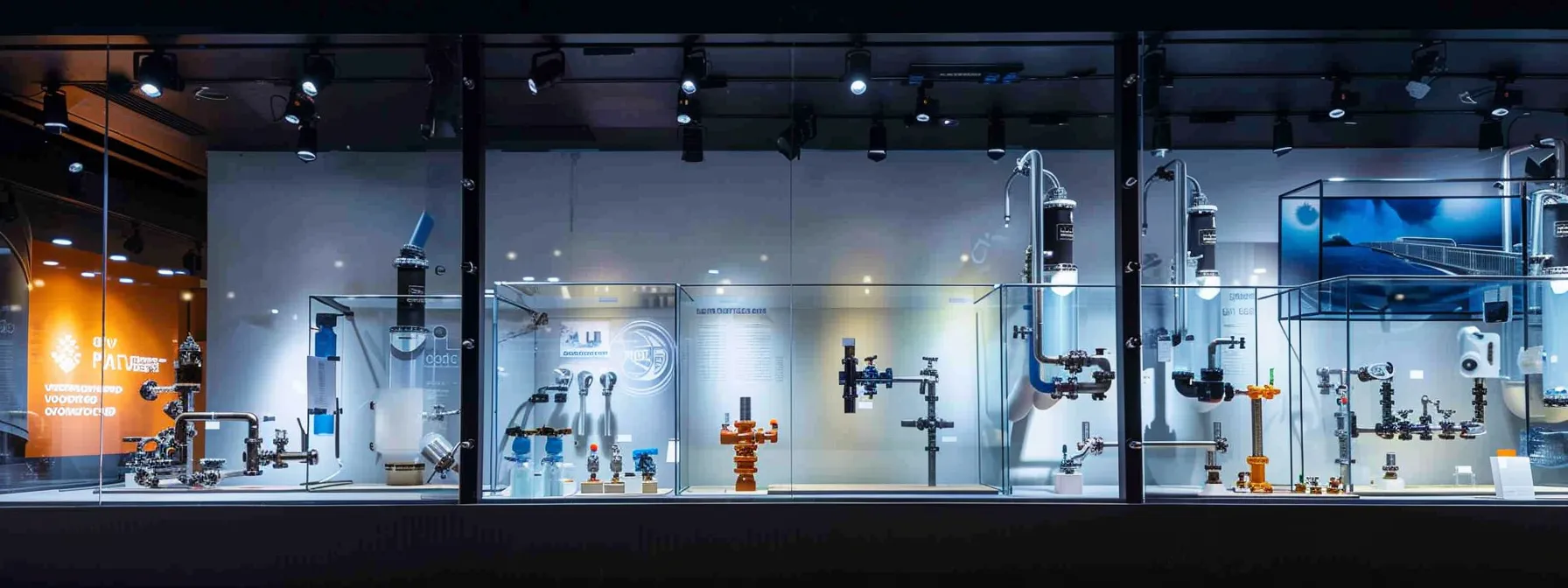Table Of Contents:
- Essential Guide to Bulkhead Fittings and Tank Accessories
- Key Takeaways
- Understanding Different Types of Bulkhead Fittings
- Explore Materials Used in Bulkhead Fittings
- Distinguish Between Threaded and Slip Bulkhead Fittings
- Identify the Right Size and Shape for Your Project
- Step-by-Step Guide to Installing Bulkhead Fittings
- Tools and Materials Required for Installation
- Drilling the Correct Size Hole for Your Fitting
- Sealing and Securing the Bulkhead Fitting Properly
- Selecting the Right Tank Accessories for Your Bulkhead Fitting
- Matching Accessories to Bulkhead Fitting Types
- Importance of Compatibility Between Fittings and Accessories
- Accessory Options to Enhance Functionality
- Maintenance Tips for Bulkhead Fittings and Tank Accessories
- Routine Inspection Steps for Wear and Damage
- Cleaning Practices for Longevity
- Replacing Worn or Damaged Parts
- Troubleshooting Common Issues With Bulkhead Fittings
- Identifying and Addressing Leaks
- Handling Cross-Threading or Improper Installation Problems
- Solutions for Fitting Corrosion or Material Degradation
- Innovations and Trends in Bulkhead Fittings and Tank Accessories
- New Materials and Designs on the Market
- Eco-Friendly and Durable Options
- Technology Integration in Modern Fittings and Accessories
- Conclusion
Essential Guide to Bulkhead Fittings and Tank Accessories
Bulkhead fittings, those indispensable components essential for attaching pipes to tanks, come in an array of materials including robust metal and versatile PVC, meeting diverse needs from a sturdy pallet-based rainwater tank setup to the delicate intricacies required by high-grade chemical reservoirs. Understanding the variations and applications of each type ensures a seamless integration into your existing system. Whether you’re involved in large-scale industrial operations or simply looking to optimize your home water storage solution, knowledge of these fittings is pivotal. In this article, I’ll guide you through the critical selection process, installation techniques, and maintenance practices to ensure your tanks perform optimally and last longer. Discover the latest innovations that are shaping the future of bulkhead fittings and tank accessories.
Key Takeaways
- Bulkhead fittings require precise selection for efficient and leak-free water systems
- Quality materials and installation techniques are critical for bulkhead fitting longevity
- Regular maintenance is necessary to preserve the integrity of water system components
- Technological advancements and eco-friendly designs are shaping the future of bulkhead fittings
- Smart sensors in fittings help optimize fluid system management through real-time monitoring
Understanding Different Types of Bulkhead Fittings

As I delve into the world of bulkhead fittings, it becomes apparent that selecting the proper component for a task, such as creating an efficient rainwater harvesting system or ensuring a secure connection in a customer‘s water tank, hinges on understanding the myriad options available. The materials like polypropylene or PVC used in these fittings play a critical role; they must not only resist the chemical makeup of the stored liquid but also endure external environmental factors. Furthermore, the distinction between threaded and slip bulkhead fittings is not trivial – each type brings its own set of advantages and installation considerations. Acknowledging the need for precision, I stress the importance of identifying the correct size and shape for a project. Not least, the inclusion of a reliable gasket is essential to prevent leaks and ensure a long-lasting, watertight seal crucial for maintaining the integrity of any rainwater or fluid storage system.
Explore Materials Used in Bulkhead Fittings
Materials play a pivotal role in the efficacy and longevity of bulkhead fittings. When processing a payment for a 1 bulkhead fitting, it’s vital to consider whether the durability of a brand‘s PVC material aligns with the demands of the application or if the chemical resistance of polypropylene is a necessity. Additionally, the type of flange incorporated can enhance the fitting’s strength, ensuring that when it’s time to tap into the system, performance and reliability are not compromised.
- Assessing the chemical compatibility of materials for safe storage
- Considering environmental durability for long-lasting installations
- Determining the appropriate flange style for enhanced support and connection stability
- Ensuring material choices reflect the quality and reputation of the selected brand
- Factoring in the accessibility for maintenance or modifications when selecting a tap-compatible fitting
Distinguish Between Threaded and Slip Bulkhead Fittings
When outfitting a barrel or an aquarium, the choice between threaded and slip bulkhead fittings drastically influences the plumbing approach. A threaded type, such as a 2 inch bulkhead, generally offers a more secure, screw-tight connection ideal for systems under higher pressure or where frequent detachment is not required. On the flip side, slip fittings, which require a tube to be glued into place, afford ease of installation in more static setups where adjustments are infrequent.
Identify the Right Size and Shape for Your Project
My approach to assuring the right fit involves a policy of diligence: carefully measuring the water tank to avoid missteps and unnecessary expenses. By comparing the technical specifications of various bulkhead fittings, I determine the compatibility with the tank‘s material, whether it be strong, corrosion-resistant brass or another substrate, transforming my client’s project into a well-engineered gift of functionality and durability.
Now that you have a solid grasp on the diverse array of bulkhead fittings available, let’s shift our focus to the practical side – installation. Prepare to equip yourself with the knowledge to expertly install these components with precision and confidence.
Step-by-Step Guide to Installing Bulkhead Fittings

One of the joys of DIY projects, whether you’re customizing furniture or enhancing a rainwater collection system, lies in the nitty-gritty details of installation. Imagine adding a 1 2 bulkhead to your shopping cart along with a strident array of essential tools and materials; it’s the first step towards a robust and leak-free installation. Drilling the perfect-sized hole is akin to laying down a solid foundation for a house—it’s got to be precise to ensure a snug fit for the fittings. It’s incredible how seamless integration of a well-sealed and secured bulkhead fitting can transform an ordinary tank into a functional piece of equipment, capable of withstanding the relentless assault of rain or the pressures of contained fluids. Grab your toolkit and let’s get to work on executing an impeccably watertight seal.
Tools and Materials Required for Installation
Before I commence installing a bulkhead tank fitting, I ensure that my toolkit includes a drill for glass if applicable, a washer to mitigate the potential for leaks, and the specific size wrench for tightening. With my smartphone on hand, I appreciate the convenience of being able to use Apple Pay for swift on-site purchases should I find myself in need of any last-minute additions.
Drilling the Correct Size Hole for Your Fitting
Attaining the precise hole size for your bulkhead fitting is paramount: a slight deviation can compromise the entire system. To ensure accuracy when preparing to install a stainless steel bulkhead union or bulkhead air fitting, I use calipers to measure the diameter of the pipe that will pass through. This diligence prevents the onerous consequence of leakage and guarantees a snug fit, utilizing FKM gaskets for their excellent chemical resistance and longevity.
- Measure the outside diameter of the pipe accurately using calipers.
- Select the appropriate drill bit that corresponds to the size of the bulkhead fitting.
- Drill a clean, burr-free hole in the tank, ensuring the surface is flat for the bulkhead fitting to seat properly.
Sealing and Securing the Bulkhead Fitting Properly
Perfecting the art of securely sealing a bulkhead fitting, such as a bung fitting, is the linchpin in the integrity of a water supply system. After threading the fitting into place, I ensure it’s as tight as necessary without over-torquing, which could damage the gasket. While engaging in a quick view of the connection, I affirm the seal is snug and leak-free, a critical step prior to attaching accessories like a garden hose.
Installing your bulkhead fittings is the first step to creating a robust system. Let’s turn our attention to choosing the optimal tank accessories that will work seamlessly with your fittings.
Selecting the Right Tank Accessories for Your Bulkhead Fitting

Once the bulkhead fitting is installed, choosing tank accessories that align with the type, such as a matching hose or a valve, is crucial for optimal system performance. The longevity of accessories, like how well they withstand ultraviolet light if outdoors, must be factored into the selection process. Ensuring compatibility between fittings and accessories avoids leaks and failures; it is here that my practical understanding of threaded connection standards and gasket selection comes to the fore. Determining which accessory options will elevate the functionality of a system requires not only technical insight but also a commitment to quality, whether paying with a credit card in-store or using a smartphone for online transactions. My focus remains steadfast on integrating components that work seamlessly to maintain the integrity of any storage or filtration system.
Matching Accessories to Bulkhead Fitting Types
Securing accessories that marry well with bulkhead fitting types is vital to system integrity, especially when eyeing the sale price and leveraging my credit options carefully. My selection is particularly mindful of the plating quality on steel components, ensuring that they meet the rigorous demands of the tank‘s environment. This combination of strategic purchasing and technical foresight culminates in a robust and efficient system setup.
Importance of Compatibility Between Fittings and Accessories
My approach considers the entire menu of options, ensuring that the nut on the bulkhead fitting aligns perfectly with the threading of the chosen accessory to withstand the pressure within the system. Tapping “add to cart,” I feel assured that the filtration components will function seamlessly, safeguarding against operational malfunctions or leaks.
Accessory Options to Enhance Functionality
My commitment to enhancing the functionality of a system often leads me to consider versatile accessory options. For 2 bulkhead installations carrying drinking water, I prioritize accessories that not only complement the liquid‘s purity but also contribute to a seamless operation. Identifying the right sealant that can withstand constant exposure to liquid and ensuring it is compatible with plastic components is essential for maintaining the integrity of the system:
- Choosing a high-grade, non-toxic sealant to ensure the safety of drinking water
- Selecting sturdy plastic valves that match the dimensions of a 2 bulkhead fitting for a leak-free experience
- Considering accessory durability to maintain a robust water system over time
With the right tank accessories for your bulkhead fitting selected, precision in maintenance becomes pivotal to longevity. Let’s switch focus to some effective upkeep practices that will keep your fittings in optimal condition.
Maintenance Tips for Bulkhead Fittings and Tank Accessories

Maintaining the integrity of my water system necessitates a diligent approach to the upkeep of its components, from the steel bulkhead to each precise valve. In my routine, I prioritize regular inspections, which are indispensable in identifying wear or damage early on. Spotting issues in a bulkhead connector or a banjo fitting before they escalate ensures the system’s seamless function. Beyond inspection, my cleaning regimen is designed to extend the life of each piece, with an emphasis on preventing the accumulation of debris and corrosive build-up. And when the lifecycle of any component—down to an inch in size, concludes, I advocate for timely replacement to sidestep the risk of sudden system failures. Such preventive strategies are the bedrock of a lasting and reliable installation.
Routine Inspection Steps for Wear and Damage
In my line of work with water treatment systems, I have learned that regular inspection of bulkhead fittings and associated accessories is an integral part of system maintenance. Carefully examining the hydraulics, particularly around pumps and the common 3 4 bulkhead, for any signs of wear or damage, helps avoid costly repairs and ensures continuous, efficient operation.
Cleaning Practices for Longevity
Maintaining bulkhead fittings is essential to prevent corrosion and ensure longevity. Frequent removal of dirt and debris that can accumulate around lawn equipment connections is vital. When cleaning, I use information from product manuals to apply non-abrasive solutions that are safe for both the metal FNPT (Female National Pipe Thread) threads and the surrounding environment.
Replacing Worn or Damaged Parts
Attending to the condition of bulkhead fittings is a key part of ensuring a water system’s performance, particularly when involving robust components like a 3 bulkhead or a pvc bulkhead. When these parts show signs of strain or failure, timely action to replace them is necessary. The price of a bulkhead union fitting is a small cog in the mechanism when compared to the potential cost incurred by water damage from a neglected system.
- Evaluate the state of bulkhead fittings regularly for any signs of damage or excessive wear.
- If degradation of a pvc bulkhead or any other fitting is detected, source a high-quality replacement without delay.
- Consider upgrading to a premium bulkhead union fitting for enhanced durability and better water system preservation.
Understanding the maintenance of bulkhead fittings and tank accessories is just one piece of the puzzle. Let’s move on to effectively troubleshoot common issues that may arise with these crucial components.
Troubleshooting Common Issues With Bulkhead Fittings

When integrating bulkhead fittings into a tank setup, encountering some operational hiccups along the way isn’t out of the norm. My extensive experience has shown me that vigilance and prompt intervention are keys to resolving issues effectively. Identifying and rectifying leaks requires a keen eye and a steady hand to ensure the integrity of the connection. Meanwhile, cross-threading or improper installation can present challenging obstacles, necessitating a careful disassembly and methodical reinstallation to safeguard against future discrepancies. Lastly, combatting fitting corrosion or material degradation is all about timely detection and applying the appropriate corrective steps, such as replacement or protective treatment, to extend the service life of the fittings and maintain a flawless operation.
Identifying and Addressing Leaks
In my experience, the first step when a leak occurs is to accurately pinpoint its source – this is often around the seal where the bulkhead fitting meets the tank wall. Once identified, I carefully tighten or replace the gasket, as this is frequently the remedy. It’s my practice to always have spare fittings and sealants on hand to swiftly manage such problems, ensuring minimal disruption and sustaining the efficiency of the system.
Handling Cross-Threading or Improper Installation Problems
In tackling cross-threading, precision is paramount; I carefully rethread or replace the fitting to restore the integrity of the connection. For situations of improper installation, I review the assembly instructions to rectify the error, ensuring all parts align correctly for optimal performance and prevent potential leaks or damage to the system.
Solutions for Fitting Corrosion or Material Degradation
To address the threat of fitting corrosion or material degradation, I prioritize the selection of high-quality materials at the outset, materials known for their corrosion-resistant properties, such as brass or stainless steel. Should corrosion occur despite these precautions, I promptly replace the affected parts, applying a corrosion inhibitor as an added defense. This proactive approach minimizes the risk of leaks or failures and upholds the smooth operation of the system over its designated lifespan.
As we pivot from resolving the usual bulkhead fitting complications, we turn our attention to the cutting-edge advancements shaping the future of bulkhead fittings and tank accessories. Brace yourself for an insightful journey into the latest innovations that are redefining efficiency and reliability in fluid management systems.
Innovations and Trends in Bulkhead Fittings and Tank Accessories

Staying abreast of current trends, I have witnessed an intriguing evolution in the design and makeup of bulkhead fittings and tank accessories. Market innovation has brought about groundbreaking materials and configurations, each with improved resilience and function. A notable shift toward environmentally conscious choices has also emerged, with manufacturers pioneering eco-friendly yet robust alternatives that align with current sustainability goals. Moreover, technological advancements haven’t shied away from this niche; modern fittings and accessories are increasingly incorporating smart features, which elevate system management to unprecedented levels of convenience and precision.
New Materials and Designs on the Market
The landscape of bulkhead fittings and tank accessories is experiencing a transformation with the introduction of cutting-edge materials that offer enhanced durability and performance. Notably, there is a surge in the use of advanced polymers that are designed to resist a broad range of chemicals and temperatures, allowing for more versatile applications in industry and agriculture. These innovations come hand in hand with sleek designs that not only streamline the installation process but also contribute to a more efficient and responsive system:
| Material/Design | Properties | Applications |
|---|---|---|
| Advanced Polymers | Chemical and temperature resistance | Industry and agriculture fluid management systems |
| Sleek Design Fittings | Easy installation, efficient system response | Water storage, waste management |
Eco-Friendly and Durable Options
The push towards green solutions in fluid management has led to an influx of eco-friendly bulkhead fittings and tank accessories. These products are engineered from sustainable resources and recyclable materials, ensuring that their environmental footprint is as minimal as possible while not compromising on durability and effectiveness.
- Adoption of eco-friendly materials that contribute to a reduced environmental impact.
- Development of recyclable and sustainable product options for conscientious consumers.
- Integration of long-lasting materials to foster product longevity and reduce waste.
Technology Integration in Modern Fittings and Accessories
The integration of technology into bulkhead fittings and tank accessories is reshaping how we monitor and manage fluid systems: Smart sensors now offer real-time data on flow rates and pressure, facilitating prompt adjustments and preemptive maintenance to avert system downtimes.
| Technology Feature | Function | Benefit |
|---|---|---|
| Smart Sensors | Monitor flow and pressure | Enables real-time adjustments and maintenance |
Conclusion
Bulkhead fittings play a critical role in ensuring a secure and leak-free connection in fluid management systems, with different materials and designs catering to specific needs. Properly choosing and installing these fittings, along with compatible accessories, is paramount for the functionality and longevity of the system. Regular maintenance and timely troubleshooting are vital in preserving the integrity and efficient operation of these fittings. Innovations in materials and the integration of technology in tank accessories are setting new standards for environmental sustainability and system management.





